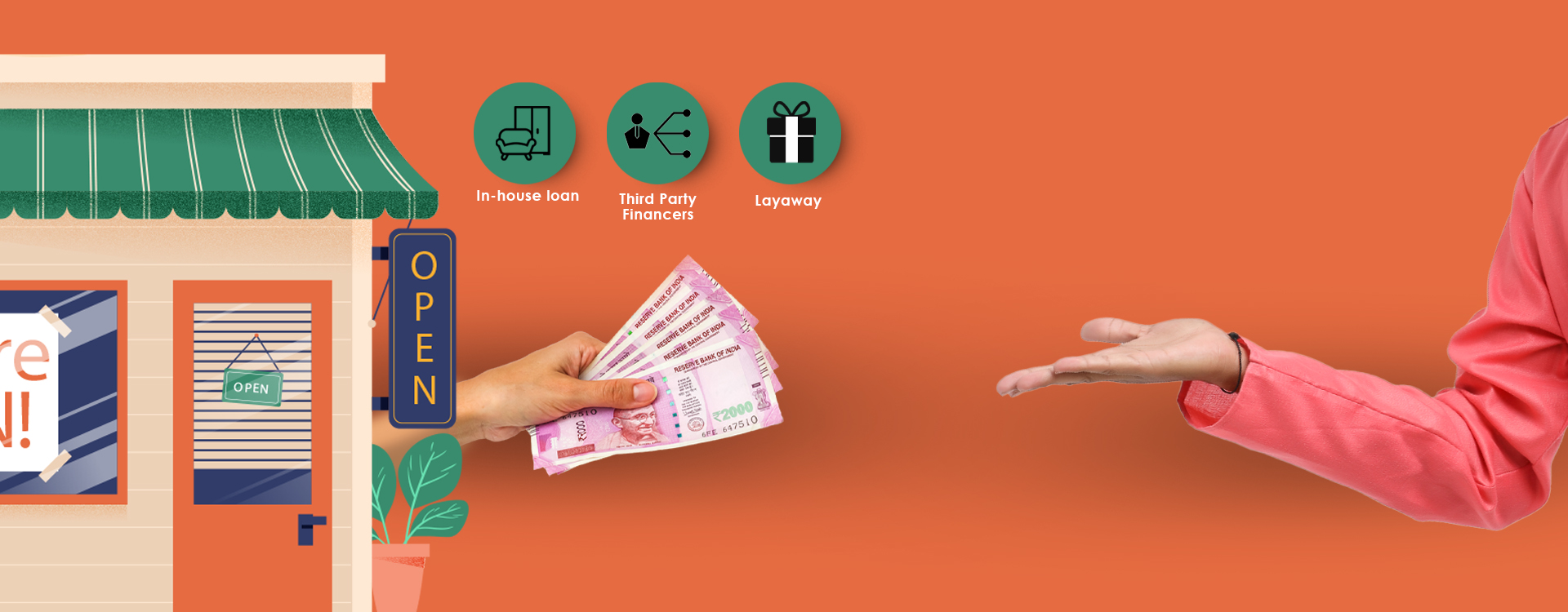For a business generating revenue from sales is always challenging. All the more if it is a small business selling high-priced items. How does a small business encourage people to purchase products without following the ‘discount’ route? Small businesses can induce buying decisions through customer financing. Customer financing or consumer financing is a method where the company does not expect the buyers to make an upfront payment immediately but over a period in installment.
‘‘
Customer financing or consumer financing is a method where the company does not expect the buyers to make an upfront payment immediately but over a period in installment.
Types of Customer Financing
- Primary financing: Offering financing programmes.
- Third-party financing: Small business owners collaborate or depend on a third-party financing provider which acts as a lender at the point of sale. The customer agrees on a payment plan decided by the third-party financer to pay the purchase’s amount over a period mostly through monthly payments.
Benefits of customer financing
Customer financing is beneficial for both customers and small businesses as it allows customers to buy what they want and businesses can improve cash flow and close sales without compromising on the price of the product.
- Increase sales: Customer financing helps businesses increase sales by offering customers the flexibility to make regular loan payments for a high-priced product within their budget ambit which otherwise would have restricted their purchases due to insufficient funds. It helps to break the affordability barrier that a customer faces at the beginning of the sales cycle.
- Increase the average order value: The customer financing programme can be used as a tool for upselling for increasing the order value. Businesses can persuade customers to buy an upgraded version as the financing programme will not affect the savings.
- Improving cash flow: With a third-party financing system in place, small businesses can remain assured that they will receive the full purchase amount within a few months, helping them to stay afloat by maintaining a healthy cash flow with no risk.
- Get new customers: By introducing customer financing programmes small businesses can expand their potential customer base by making their products and services affordable for new consumers.
Options, small businesses can offer
- In-house Loans: This option is appropriate for businesses selling high-priced goods or services in verticals like furniture, appliances, electronics, home renovations. For in-house loans, small businesses need to pay costs involved with credit checks and collecting payments. Businesses also need to develop credit policies and decide terms for accepting partial payments from customers.
- Third-party financing: Third-party financers allow customers for partial payments of their purchases on interest-free terms on a monthly basis. Small businesses in this have to pay a flat monthly fee to the third party for each transaction processed for financing. Third-party financing takes care of the credit checks.
- Layaway: Layaway is a payment plan where a customer can receive the item only after he/she has completed all the partial payments, till then the product remains with the business. If the customer is not able to complete the payment, the product is returned to stock, and the rest of the payments done will be returned in whole, minus a fee, or forfeited, depending on the terms of the agreement.
What small businesses need to keep in mind?
Before applying any financing model small businesses should evaluate a customer’s ability to pay on credit. After evaluating customers, businesses should review customer financing options and decide on one offer and let customers know about it. In the case of the third financing model, the credit worthiness of the customer is being evaluated by a third-party financer. Businesses operating in luxury or discretionary products have been hampered in the pandemic. As per a survey conducted by McKinsey & Company, it found that 50 percent and 48 percent have decided to forgo the purchase of smartphones and large appliances respectively, as they wanted to save money and are wary of covid’s impact on income. This also means lower sales for businesses. Customer financing aids businesses to increase store sales and transaction values by allowing shoppers to pay off large purchases over time.




